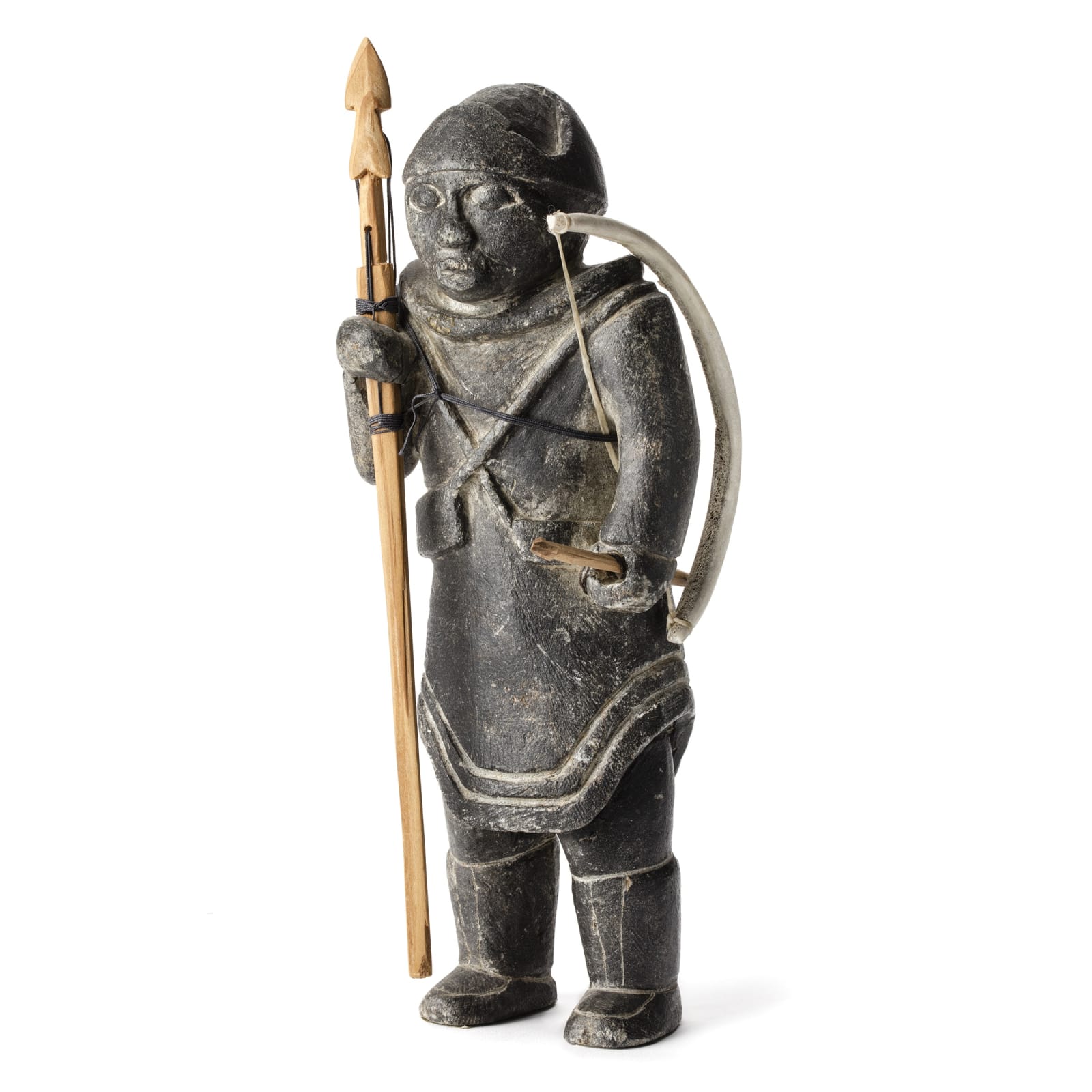JOE TALIRUNILI (1893-1976) PUVIRNITUQ (POVUNGNITUK)
Hunter with Harpoon, Bow and Arrow, mid-late 1960s
10 x 4 x 2 in
25.4 x 10.2 x 5.1 cm
25.4 x 10.2 x 5.1 cm
stone, antler, wood, and sinew thread
Published: this sculpture is reproduced in the landmark monograph by Marybelle Myers, Joe Talirunili: “a grace beyond the reach of art” (FCNQ, 1977) p. 15. Joe Talirunili was an elderly...
Published: this sculpture is reproduced in the landmark monograph by Marybelle Myers, Joe Talirunili: “a grace beyond the reach of art” (FCNQ, 1977) p. 15.
Joe Talirunili was an elderly man obsessed with the past, particularly his personal and family history. Locally, both the man and his art were considered eccentric. The fearless way in which he approached art making has secured for Talirunili a place in the pantheon of the world’s great folk artists.
Single figures, in particular standing men, women and owls, were Joe’s favourite sculptural themes. The style of this figure itself suggests a mid-late 1960s date. Talirunili actually presents a fair amount of detail in this stone figure of a hunter, both carved and using added materials. He was never one to be fussy about the materials he used for accessories however, using whatever he had on hand. In this relatively large example the result is homespun but quite impressive.
References: for similar figures of hunters by Talirunili see The McMichael Canadian Art Collection (1990) p. 157; and Walker’s May 2015, Lot 58.
Joe Talirunili was an elderly man obsessed with the past, particularly his personal and family history. Locally, both the man and his art were considered eccentric. The fearless way in which he approached art making has secured for Talirunili a place in the pantheon of the world’s great folk artists.
Single figures, in particular standing men, women and owls, were Joe’s favourite sculptural themes. The style of this figure itself suggests a mid-late 1960s date. Talirunili actually presents a fair amount of detail in this stone figure of a hunter, both carved and using added materials. He was never one to be fussy about the materials he used for accessories however, using whatever he had on hand. In this relatively large example the result is homespun but quite impressive.
References: for similar figures of hunters by Talirunili see The McMichael Canadian Art Collection (1990) p. 157; and Walker’s May 2015, Lot 58.
Provenance
Waddington’s Dec. 1981, Lot 128;
an Ottawa private collection.
Literature
Marybelle Myers, Joe Talirunili: “a grace beyond the reach of art” (FCNQ, 1977), reproduced p. 15.
Join our mailing list
* denotes required fields
We will process the personal data you have supplied in accordance with our privacy policy (available on request). You can unsubscribe or change your preferences at any time by clicking the link in our emails.

